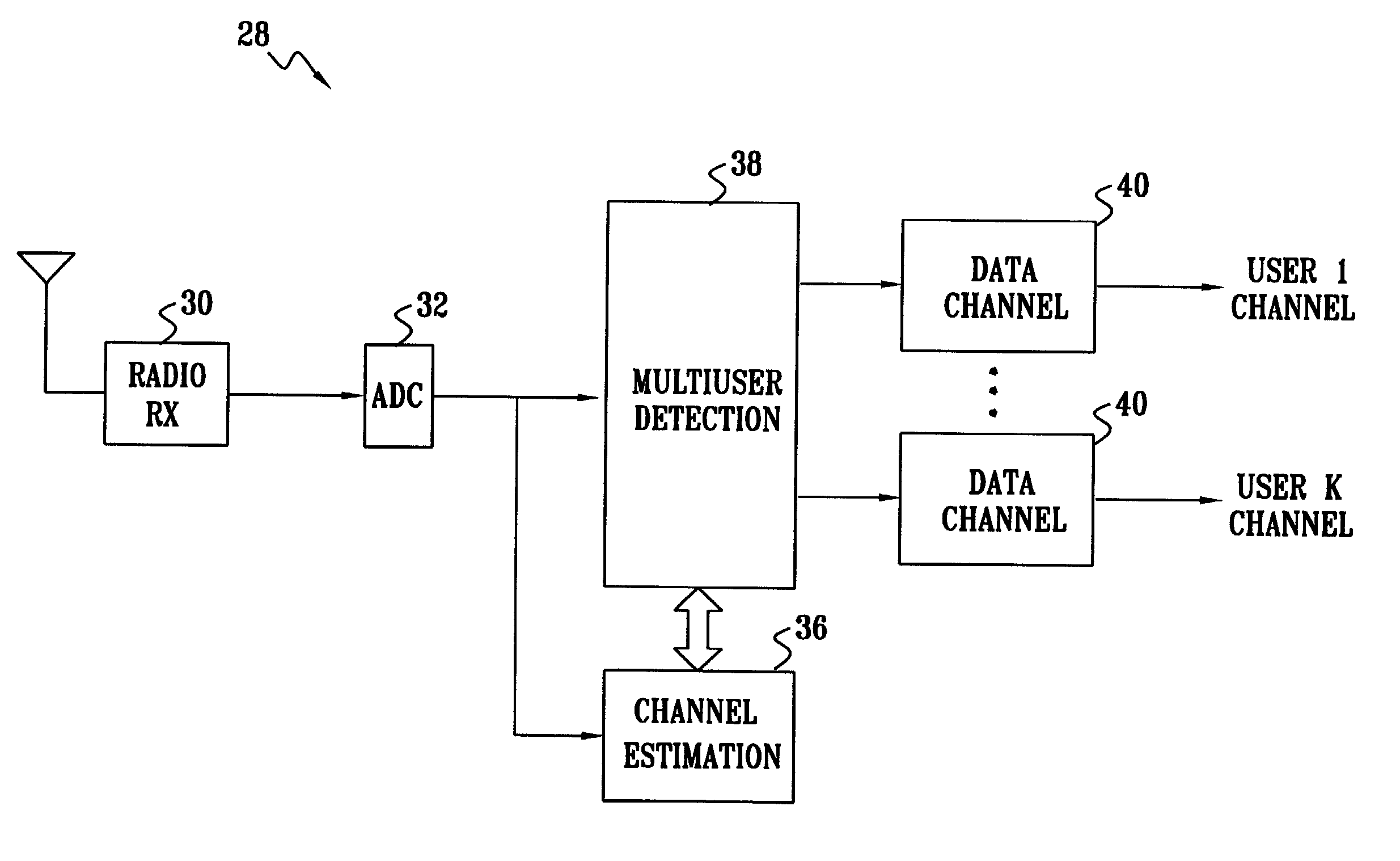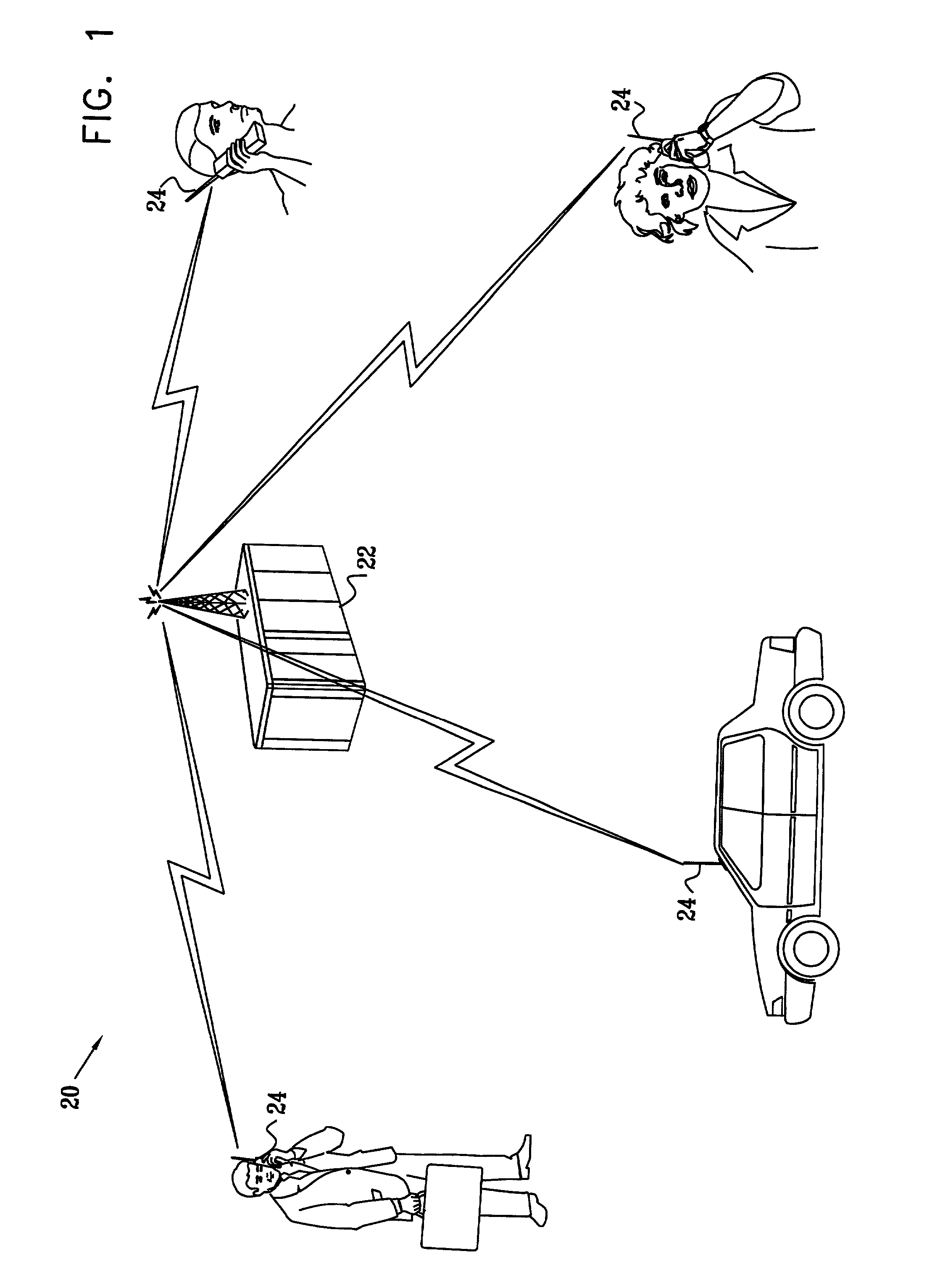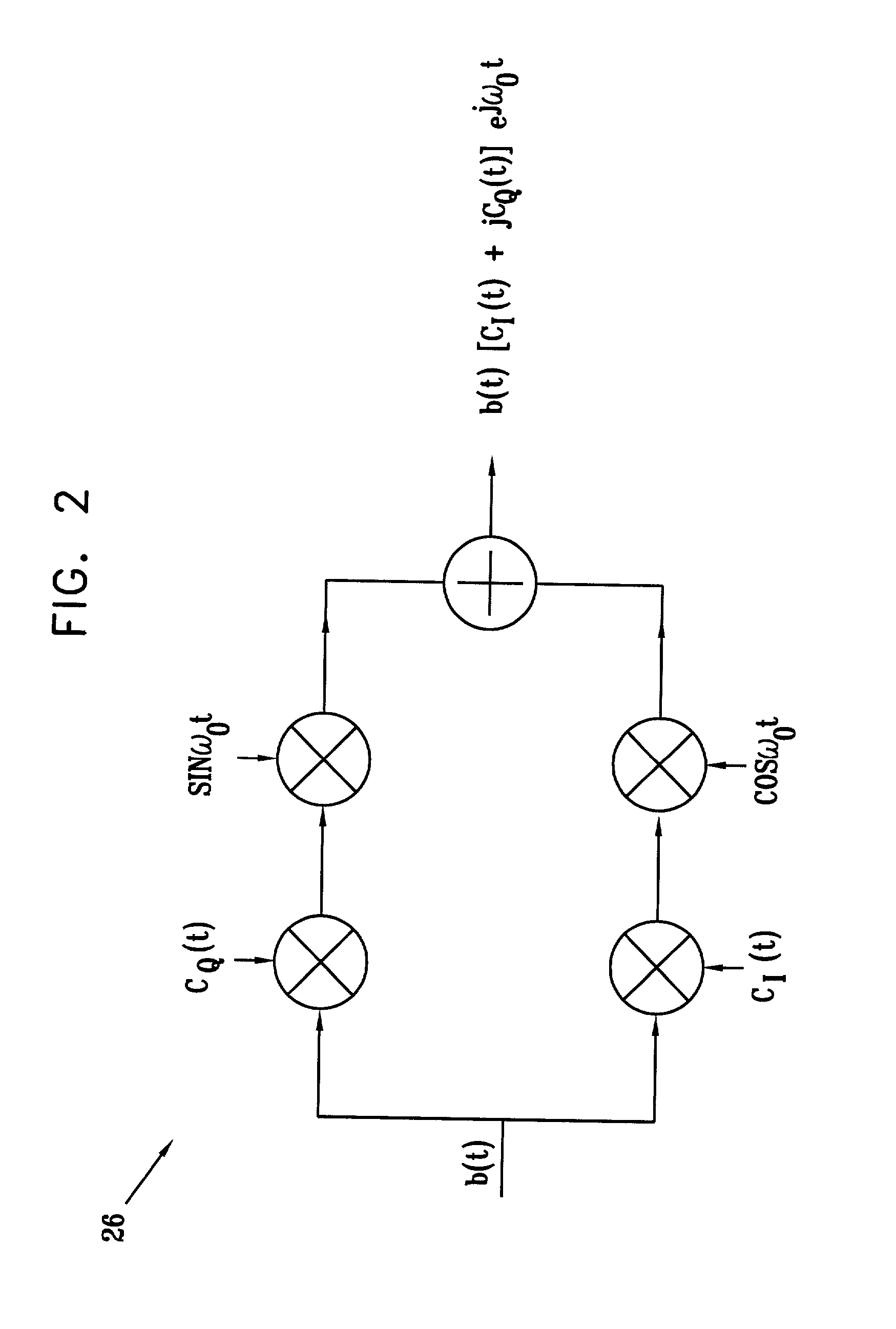CDMA multi-user detection with a real symbol constellation
a multi-user detection and constellation technology, applied in the field of digital signal processing, can solve the problems of limiting the capacity and performance of ds-cdma systems, lack of complete orthogonality between spreading codes, and mai becoming increasingly problematic, and achieves the effect of simple and efficien
- Summary
- Abstract
- Description
- Claims
- Application Information
AI Technical Summary
Benefits of technology
Problems solved by technology
Method used
Image
Examples
Embodiment Construction
[0039]FIG. 1 is a schematic, pictorial illustration of a wireless communication system 20, typically a cellular system, in accordance with a preferred embodiment of the present invention. A base station 22 transmits downlink signals to a plurality of users 24, and receives uplink signals from the users in return. The signals are modulated using a DS-CDMA scheme, with BPSK modulation, as described in the Background of the Invention. In order to separate and process the signals that it receives from multiple users 24, base station 22 employs a novel detection scheme using a real statistical model, as described in detail hereinbelow.
[0040]FIG. 2 is a block diagram that schematically illustrates elements of a transmitter 26 operated by users 24 in system 20. The operation of this transmitter is represented mathematically by equations (2) and (3) above. Each symbol b(t) to be transmitted is multiplied by a complex PN spreading waveform, with different real (I) and imaginary (Q) parts CI(...
PUM
 Login to View More
Login to View More Abstract
Description
Claims
Application Information
 Login to View More
Login to View More - R&D
- Intellectual Property
- Life Sciences
- Materials
- Tech Scout
- Unparalleled Data Quality
- Higher Quality Content
- 60% Fewer Hallucinations
Browse by: Latest US Patents, China's latest patents, Technical Efficacy Thesaurus, Application Domain, Technology Topic, Popular Technical Reports.
© 2025 PatSnap. All rights reserved.Legal|Privacy policy|Modern Slavery Act Transparency Statement|Sitemap|About US| Contact US: help@patsnap.com



